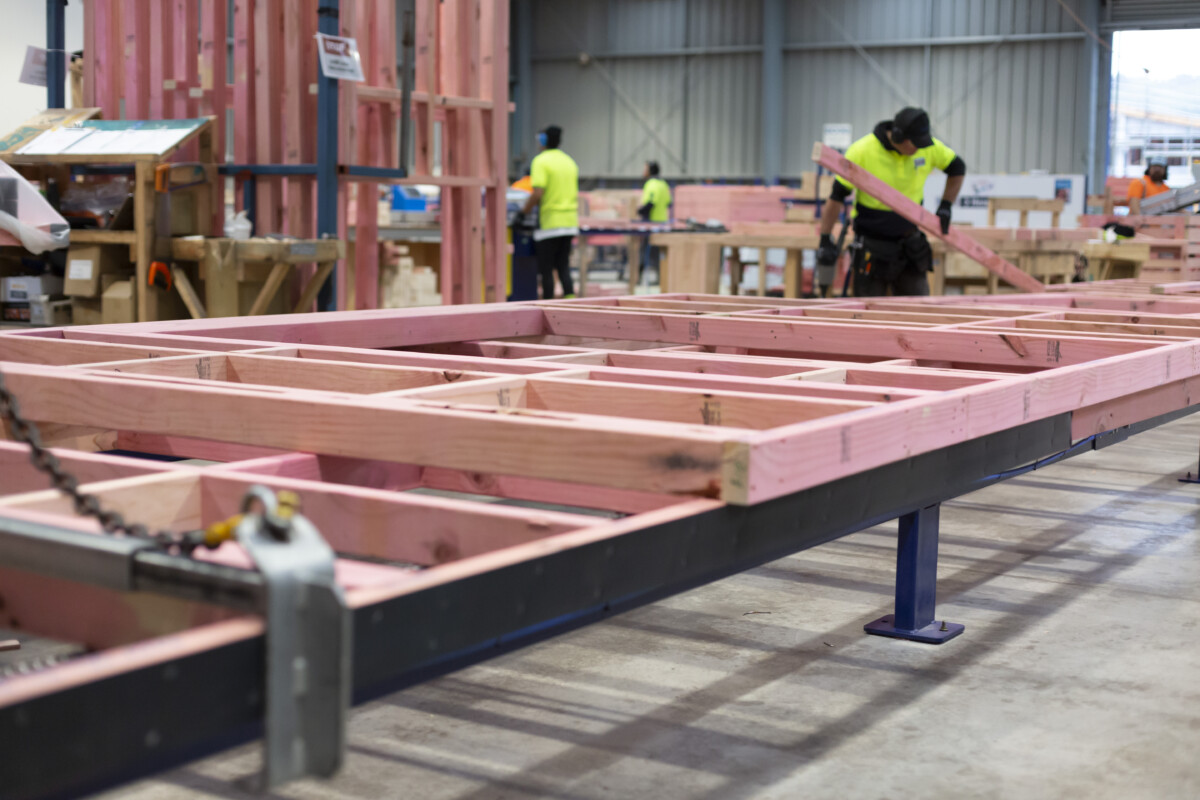Offsite insight
02 Mar 2021, Building and housing, News

With the shortage of homes and the skilled labour to build them, finding building methods that speed up the build process and use labour more efficiently is a hot topic. We take a look at the rising use of prefabrication in New Zealand and what is pushing it
On a small scale, prefabrication, also called offsite manufacturing (OSM), has been common in New Zealand building for decades, with many residential builds using frames and trusses built offsite. Plenty of builders will also remember some of their school classrooms referred to as ‘the prefabs’.
There have been other examples of offsite manufactured housing in New Zealand’s past too – beginning in the 1920s, the Railways housing programme used elements of OSM. The Hydro Scheme housing from the 1940s to 1970s were OSM buildings, and some building companies, like Lockwood homes, used elements of OSM from the 1950s onwards. So, the OSM concept is far from new here.
However, with significant players entering the OSM market, and the potential for large-scale investment from government clients such as KiwiBuild and Kainga Ora, OSM appears poised to provide much more than New Zealand has seen to date. There is now a continuum of OSM – from frame and truss elements within a traditional built-on-site home, to a complete home built offsite, with taps and light fittings installed, craned off the boat from China. Between those two ends of the spectrum there now exists a range of offsite manufacturing options.
Not all smooth sailing so far
While the potential for prefabrication to take a larger slice of the new-build pie has existed for a number of years, there have been notable stumbles along the path to where the OSM industry sits now. Ehome and Matrix homes were both early adopters of OSM in the NZ market, and did not survive the early stages, going bust in 2015 and 2018 respectively. Both pointed to consumer-reticence about OSM and lack of government commitment to make orders for public housing as contributing factors in their demise.
Small here, big overseas
Compared with many international building industries, New Zealand’s use of OSM is small, with about 10% of our builds utilising OSM techniques (beyond frame and truss). By comparison, Sweden’s homes are 90% OSM and Finland’s are 50% OSM – partly prompted by a need to overcome the otherwise short build-window that comes with such a long and cold winter. In the United States, around one third of single-family houses are manufactured offsite or use modular components. However, the level of OSM in New Zealand appears to be changing fast.
What’s different now?
The need to resolve the longstanding shortage of housing has been named by Government as “extremely urgent”. As a response to that urgency, the government’s public housing Ministry and the main supplier of state houses, Kainga Ora, is actively supporting and encouraging increased use of OSM. Currently, 12% of state homes under construction use some OSM techniques (beyond frame and truss) and Kainga Ora has stated that it is expanding its OSM pilot program to trial more new products, design solutions and offsite manufacturing techniques.
Tony Whale, General Manager of Concision, an offsite manufacturer established in 2015, said: “the backing of Kainga Ora provides us with long-term certainty and the ability to improve and refine our process”.
With that state customer in the background, a number of large-scale OSM manufacturers have set up in New Zealand. Several are large organisations with significant building business experience, both here in New Zealand and overseas, such as Fletchers’ Clever Core and Panasonic Homes from Japan.
Building Act changes soon
The Select Committee is due to report on the Building (Building Products and Methods, Modular Components, and Other Matters) Amendment Bill by 4 March 2021 and is likely to become law.
The key provisions in the Bill relating to OSM are the introduction of a new certification scheme which will allow prefab manufacturers to be certified to manufacture what the bill calls “modular components” and demonstrate compliance with the Building Code. Proponents of the Bill promise it will provide a shorter and more efficient consenting process for certified manufacturers.
These changes will support existing OSM manufacturers and likely encourage new entrants.
More OSM to come
PrefabNZ is an organisation representing and promoting offsite manufacturing in New Zealand. Chief Executive Scott Fisher says the OSM industry is vibrant, despite frustrations over the slow pace of regulatory change.
“There are 40 to 50 prefab building companies of various types in operation and more preparing to launch, and that means there is an increasing array of high-quality choices for clients.”
In the next print issue of Under Construction, we will a look at some of the examples operating along the continuum of OSM currently manufacturing homes in New Zealand.
Register to earn LBP Points Sign in



